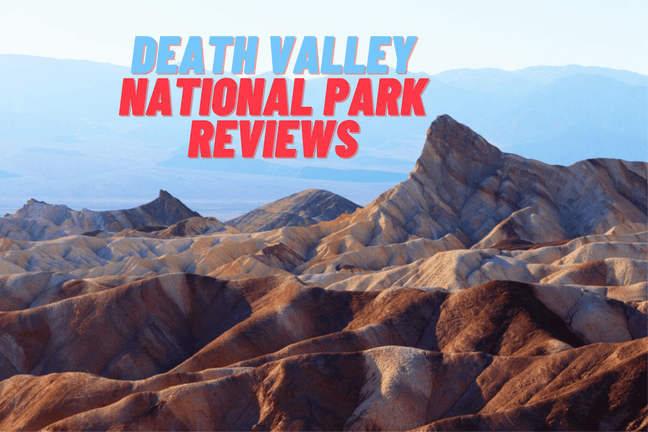Introduction
Death Valley National Park, located in the United States, is a remarkable desert landscape that spans across California and Nevada. Renowned for its extreme heat and arid environment, it holds the distinction of being the hottest and driest national park in the country. Encompassing an area of about 3.4 million acres, it is also the largest national park in the contiguous United States.
The park is characterized by its diverse geological features, including salt flats, sand dunes, canyons, and rugged mountains. Among its prominent landmarks is Badwater Basin, which boasts the lowest point in North America at 282 feet below sea level. The park is also home to Dante’s View, offering breathtaking panoramic views of the valley, and the Mesquite Flat Sand Dunes, an iconic landscape renowned for its picturesque and ever-shifting dunes.
In addition to its geological marvels, Death Valley National Park supports a unique and resilient ecosystem that includes various species of plants and animals adapted to the harsh desert conditions. Despite its seemingly inhospitable nature, the park is home to a surprising array of life forms, such as desert bighorn sheep, coyotes, and various species of reptiles and birds.
Visitors to the park can enjoy a range of recreational activities, including hiking, camping, and stargazing, with the latter taking advantage of the park’s designation as an International Dark Sky Park, making it an ideal location for observing the night sky. However, given the extreme temperatures during the summer months, visitors are advised to take necessary precautions and plan their trips accordingly.
Overall, Death Valley National Park stands as a testament to the resilience of life in the face of adversity, offering visitors a unique opportunity to explore an otherworldly landscape shaped by the forces of nature over millions of years.
Furthermore, Death Valley National Park holds historical significance, with remnants of past human habitation visible in the form of ghost towns and archaeological sites. These sites offer a glimpse into the lives of the Native American tribes and the pioneers who once traversed the region, leaving behind a rich cultural heritage that adds depth to the park’s narrative.
The park’s diverse and awe-inspiring terrain has also attracted filmmakers, with many movies utilizing its dramatic backdrop. From classic Westerns to contemporary blockbusters, Death Valley has served as a captivating setting for various cinematic endeavors, adding to its allure as a destination of cultural significance.
Despite its harsh environment, the park welcomes numerous visitors each year, all drawn to experience its raw natural beauty and unique offerings. Whether exploring the rugged terrain, marveling at the surreal landscapes, or seeking solace in the silence of the desert, visitors often leave with a newfound appreciation for the resilience of life and the enduring power of nature.
As one of the most striking and iconic national parks in the United States, Death Valley continues to inspire awe and fascination, inviting all those who venture within its borders to witness the magnificence of the natural world at its most extreme and sublime.
READ ALSO: USA Tourist Attractions Guide – 30 Best tourist attractions in the USA
Death Valley National Park Frequently Asked Questions
Here are some frequently asked questions about Death Valley National Park:
When is the best time to visit Death Valley National Park?
The best time to visit Death Valley is during the late fall, winter, and early spring months when temperatures are milder and more manageable. Avoid visiting during the scorching summer months when temperatures can soar to extreme levels.
What are some must-see attractions in Death Valley National Park?
Some must-see attractions include Badwater Basin, Zabriskie Point, Dante’s View, Artist’s Palette, and the Mesquite Flat Sand Dunes.
What precautions should I take when visiting Death Valley?
It’s crucial to stay hydrated, wear sunscreen, and dress appropriately for the desert environment. Visitors should also be aware of the signs of heat exhaustion and carry plenty of water at all times.
Are there any accommodation options within the park?
Yes, Death Valley offers various accommodation options, including campgrounds and lodges. Stovepipe Wells Village, Furnace Creek, and Panamint Springs are popular areas for lodging within or near the park.
Can I bring my pet to Death Valley National Park?
Pets are allowed in some areas of the park but must be kept on a leash at all times. They are not allowed on most trails or in public buildings. It’s essential to check the specific pet regulations before visiting.
Are there any ranger-led programs or guided tours in the park?
Yes, the park offers ranger-led programs and guided tours during certain times of the year. These programs include hikes, talks, and educational activities that provide insights into the park’s geology, history, and ecology.
Is there cell phone reception in Death Valley National Park?
Cell phone reception can be limited or non-existent in certain areas of the park. Visitors should be prepared for limited connectivity and plan accordingly.
Are there any dining options within the park?
Yes, there are dining options available at various locations within the park, including restaurants and cafes at lodges and resorts. However, visitors should also consider bringing their own food and water, especially when exploring remote areas.
Conclusion
In conclusion, Death Valley National Park stands as a testament to the resilience of life in one of the harshest environments on Earth. Its breathtaking landscapes, unique geological formations, and rich cultural history make it a captivating destination for adventurers, nature enthusiasts, and those seeking to explore the wonders of the natural world.
From the vast salt flats to the towering sand dunes, the park’s diverse terrain offers an unparalleled opportunity to witness the forces of nature at work. The park’s extreme temperatures and arid conditions add to its mystique, creating an otherworldly experience that leaves a lasting impression on all who venture into its depths.
While it’s crucial to take precautions and plan accordingly when visiting this desert oasis, the rewards of exploring its rugged beauty are immeasurable. Death Valley National Park continues to inspire awe and fascination, serving as a reminder of the remarkable resilience of life and the enduring power of the natural world. Whether you are an outdoor enthusiast, a history buff, or simply a curious traveler, Death Valley offers an unforgettable experience that speaks to the beauty and wonder of our planet’s diverse landscapes.
In other related article, Top 20 Most Beautiful Places to Visit in Dubai






